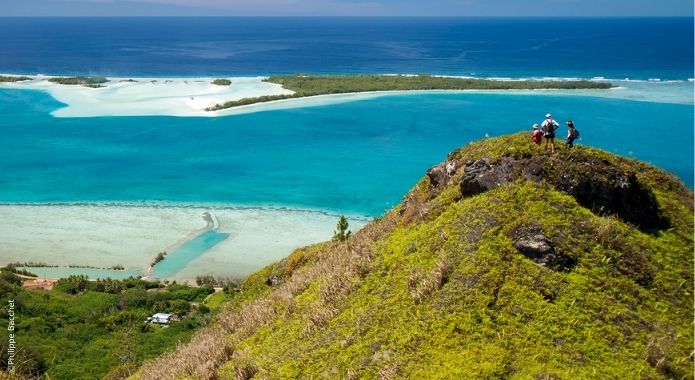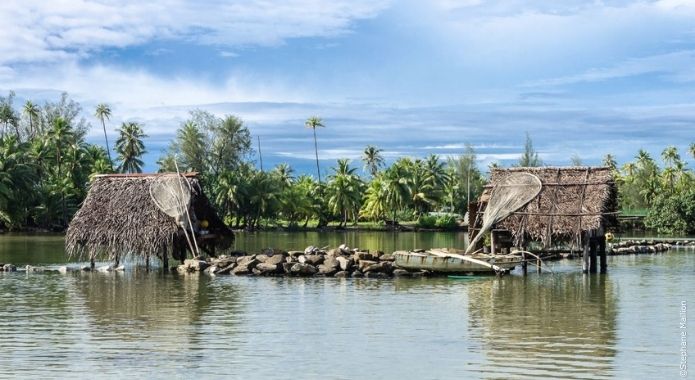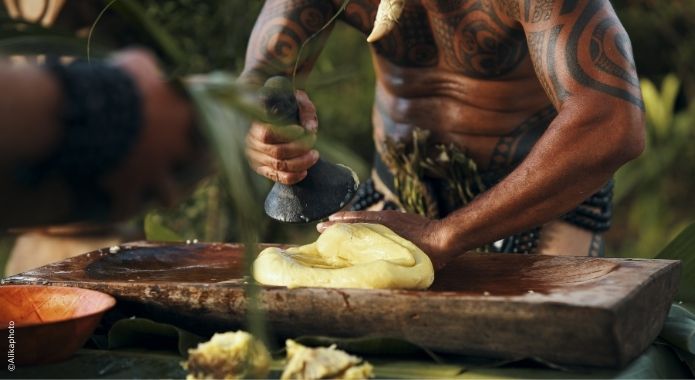Flights to Rimatara
With a surface area of 9 km² and a circumference of 8.5 km, Rimatara is the smallest of the Austral Islands, 665 km southeast of Tahiti. The opening of the airport in 2006 and the construction of the first structures for receiving visitors in 2008 have led to the gradual development of tourism on the island.
Rimatara has its own special charm, with its sublime landscapes, many assets and gentle way of life. It is a bit like a miniature Rurutu: beautiful beaches of white sand, an encircling reef, small inlets coated in feo (fossilised coral) emerging from the limpid waters of the lagoon, and a few small cliffs, mean it has no reason to be jealous of its sister islands. You will have no trouble finding a spot to enjoy the sun and a peaceful bathe. Meanwhile, the centre of the island, which forms a plateau no higher than 83 m, is ideal for exploring on foot or by bike. Its exuberant vegetation (abundant fruit trees, flowering plants, taro plantations, pandanus, nono) is home to two rare endemic species that will be sure to delight birdwatchers and the curious alike: the Rimatara reed warbler and, in particular, the Kuhl's lorikeet or ura (which means "red" in Polynesian).
A veritable rainbow, the ura is easily recognisable by its bright colours: red, yellow, greens and blues. It is especially fond of banana, lychee and kapok trees. Sacred in pre-European times, the ura's feathers were used in the making of objects of prestige for the powerful leaders of the past. This magnificent creature is the emblem of Rimatara and, in 2007, it was reintroduced to the Cook Islands, from where it had disappeared, in particular to the island of Atiu.
Rimatara is also well known for its unique local crafts, which are one of the island's main sources of income, together with the cultivation of coprah, taro, nono and pandanus, which goes on to be used throughout Polynesia. In the island's three villages, Anapoto, Motuaura and Amaru, you will be able to see the patient activity of weaving (baskets, peue, hats, etc.), the preparation of fara or pandanus, and the making of pupu or shell necklaces, known for their elegance and diversity of colours. The wood carving of the Austral Islands, still little known, is highly elaborate. It is now taught at the Centre for Young Adolescents (CJA), thereby helping to perpetuate this rare art form.
There are also a number of tourist and archeological sites, such as the Teruatavai caves, the royal burial places, the island's pito and the marae of Hirirua. Rimatara is the ideal destination if you're looking for a tranquil setting and are keen to get off the beaten track to explore an island offering many charms.
 Practical information
Practical information
Rimatara airport
Rimatara airport is located approximately 15 minutes by car from the main villages.
There is no shuttle service, so to get to the villages, you will need to go by car.
If you have booked tourist accommodation, find out from your hosts whether they can arrange your outward and return transfer.
Services available
- Air Tahiti agency
- Snack bars
- Telephone kiosk
- Toilets
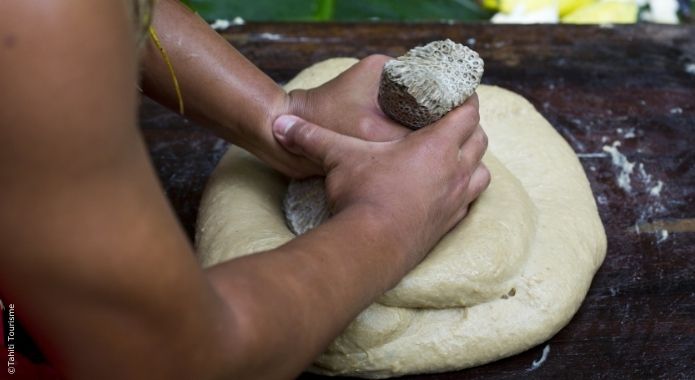
Minimum flight duration : 1h55
Distance from Tahiti : 654 km
When people arrive on the island, whether by air or by sea, they must pass through a smoke screen; this tradition was begun in memory of the great epidemics of the 19th and early 20th centuries.
Rimatara is the smallest of the Austral Islands, with a surface area of just 9 km².
The island was the last in the archipelago to be discovered by the Europeans, in 1811, during the rule of Queen Tamaeva II.
The island has two endemic species of bird, the Rimatara reed warbler and the stunning ura, or Kuhl's lorikeet. The latter is today found throughout the year on the island (around 800 birds), thanks to the tabu issued by Rimatara's last queen, Tamaeva IV. The ura was reintroduced to the Cook Islands (island of Atiu) in 2007, from Rimatara.
The island's inhabitants speak their own dialect, called Rimatara.
Air Tahiti magazine
 The good reasons to visit Rimatara
The good reasons to visit Rimatara
The good reasons to visit
- An island with a laid-back, tranquil way of life.
- An ideal setting for bathing, enjoying the sun or simply admiring the scenery (beaches of white sand, sheltered inlets and small cliffs).
- The island's interior makes for pleasant walks and cycle rides.
- Admire the bright-coloured ura and the Rimatara reed warbler, two rare bird species on the island.
- Discover the local crafts (shell necklaces, weaving, wood carvings).
Do not miss
- Rare birds Watching,
- The beaches of white sand (in particular Anapoto),
- The village of Amaru's seafront cemetery,
- Climbing Mont Uahu,
- The marae of Hirirua,
- The Teruatavai caves,
- The Pito, a small marae in the centre of the island,
- Motuaura Bay,
- The craft centre,
- The churches and Sunday services,
- The royal burial places in Amaru,
- The CJA (open in term time, during school hours).

 You may also like
You may also like
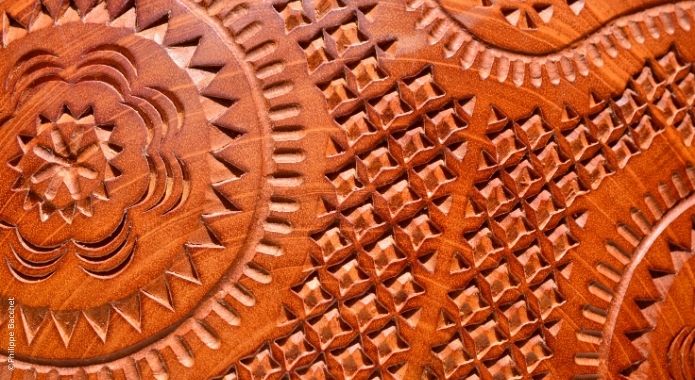
Tubuai
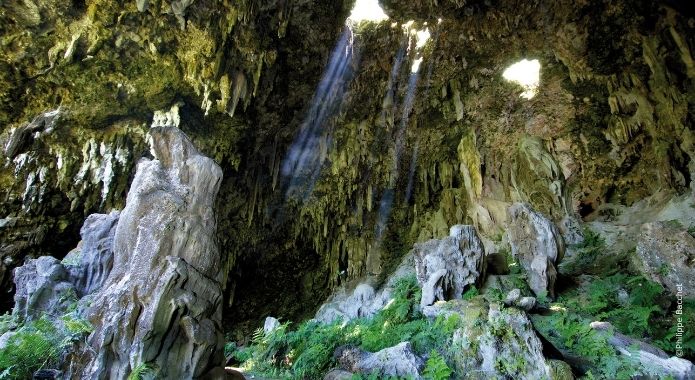
Rurutu
